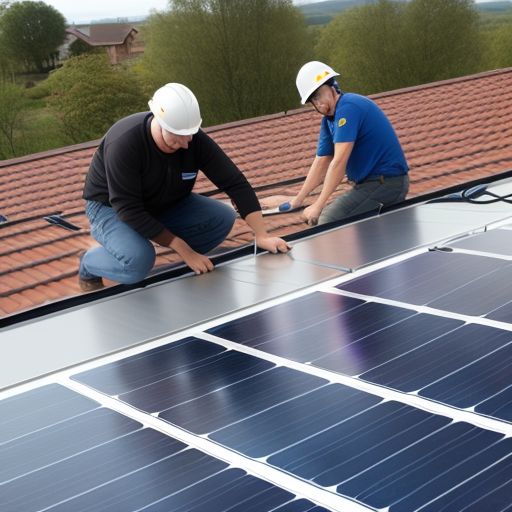Decentralised Energy
A Missed Opportunity for Private Sector-Led Growth
Published 2nd January 2025
I am pleased to see the government’s recognition of the Royd concept of a Decentralised Energy Network by utilising solar energy from millions of rooftops. However, the proposed implementation strategy falls short in several critical areas.
The government’s plan relies heavily on funding through grants, diverting resources from home insulation initiatives, thereby jeopardising progress on that essential target. The approach is further constrained by bureaucratic inefficiencies, with eligibility limited to means-tested, fuel-poor households. This creates unnecessary red tape and significantly narrows the scope of the initiative, undermining its potential to deliver wide-reaching benefits.
By failing to engage the private sector as a key partner in delivering these outcomes, the government risks missing a vital opportunity to foster economic growth and achieve ambitious energy objectives. A more effective strategy would prioritise private sector facilitation to drive implementation at scale, ensuring both efficiency and long-term sustainability.
Anthony Royd
Energy Firms: Unlocking Profitability Through Rooftop Solar Power
The Royd solution is to enable energy firms to achieve strong profit margins by leveraging the rooftops of UK homes to generate solar energy, which they can trade to retail energy suppliers. At the same time, this initiative benefits householders by significantly reducing their energy costs, creating a win-win scenario for both energy providers and consumers. Here’s how:
Ownership and Control
By owning and maintaining the solar panels, batteries, and related infrastructure, energy firms retain full control of the energy generated. This ensures that all revenue from selling surplus energy to the grid or retail energy firms goes directly to them.
Cost Efficiency
Unlike large energy farms, rooftop installations eliminate significant costs like land acquisition, lengthy planning permissions, and grid connection infrastructure. Retrofitting existing homes spreads the cost over a wider network without requiring additional land investment.
Peak-Time Trading
Homes with solar panels and batteries can store energy during the day and release surplus energy to the grid during peak demand, when electricity prices are highest. This strategic timing maximises profits from selling electricity at premium rates, whilst incentivising home owners with lower energy costs.
Reduced Central Infrastructure Costs
Decentralised energy generation reduces strain on the central grid and lowers energy transmission costs, which can otherwise erode profit margins.
Scalability
With millions of rooftops available, the scalability of this decentralised approach offers firms a substantial opportunity to generate long-term profits.
Targeted Financial Support
The government could implement the Royd Monetary Policy by reverting the Bank Levy to non-remunerated reserves or aligning payments with those of other G7 central banks. Combined with an increase in Cash Ratio Deposits (CRD), this approach would stabilise the money markets and reduce the cost of servicing the national debt.
Commercial banks, in turn, could receive CRD relief to issue low-cost loans to energy firms for retrofitting older homes. This initiative would support the installation of cavity wall and loft insulation alongside solar energy systems, potentially reducing energy consumption by 20% to 40%, depending on initial insulation levels and property type.
Financial
If the Bank of England offsets an equivalent amount of CRD for UK banks offering loans to energy firms, those banks would benefit from the income generated by low-interest loans. This strategy would also yield substantial savings for the government: the Treasury could save £6.6 billion currently allocated to its Warm Homes Plan, while annually gaining an additional £35 billion from interest paid on excess reserves and £15 billion allocated for its Net Zero initiative.
Offsetting Initial Investments
Energy firms can recover installation and maintenance costs through energy sales over time. By avoiding the high costs of land and complex grid connections associated with countryside energy farms, these investments become more feasible and faster to recoup.
The Economic Growth Potential of a Decentralised Solar Energy System
Investment Costs and Job Creation
Initial Costs
Retrofitting homes with insulation ranges from £10-£20 billion; adding solar panels increases the total to £50-£100 billion.
Job Creation
Every £1 million invested in the energy sector is estimated to generate approximately 14 jobs, meaning a £20 billion investment could conservatively create 280,000 jobs in manufacturing, construction, installation, and maintenance. However, this estimate may understate the potential impact.
According to Energy UK and the International Trade Administration, the UK energy sector supports approximately 734,000 direct and indirect jobs. In 2022 alone, the sector invested $17 billion (£16.6 billion), equating to approximately 44 jobs per £1 million invested. These figures highlight the substantial job creation potential of scaling up investments in renewable energy and energy efficiency projects.

Energy Savings
Annual Savings
Cavity wall and loft insulation save £200-£400 per home annually. Across 10 million homes, this equals £2-£4 billion in consumer energy savings each year.
Lower Energy Demand
National energy demand would significantly reduce, easing strain on the energy grid.
Environmental Impact
Carbon Reductions
Solar panels offset approximately 1 ton of CO2 per system annually. Millions of systems could make a major contribution to the UK’s 2050 net-zero target.
Sustainability
Increasing renewable energy sources is critical for long-term environmental resilience.
Economic Multiplier Effect
Boosting Local Economies: Savings on energy bills can be reinvested into local businesses, goods, and services.
Multiplier Returns
Every £1 spent on energy efficiency generates approximately £4 in broader economic activity.
Long-term Maintenance Costs
Minimal Costs
Insulation has low maintenance requirements, while solar panels need only occasional servicing and inverter replacements every 5-10 years.
Sustained Benefits
Long-term operational costs remain manageable while delivering consistent energy savings.
Conclusion: Growth Potential
Direct Impact
Economic Growth—A £20 billion investment could result in 280,000 jobs and £2-4 billion in annual household savings.
Over time, economic benefits—including job creation, savings reinvested locally, and environmental improvements—could exceed £100 billion when factoring in multipliers, increased productivity, and reduced healthcare costs.
By creating a network of home-based solar “mini power plants,” energy firms can establish a profitable, sustainable, and decentralised energy model while—contributing to a greener future and energy efficient houses, significantly reducing householder’s energy costs, or Is It Me!